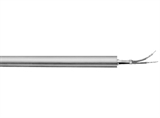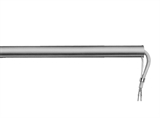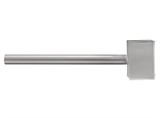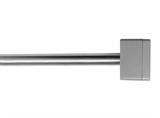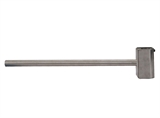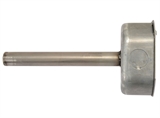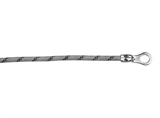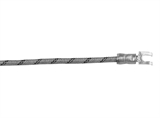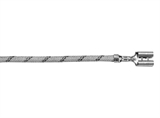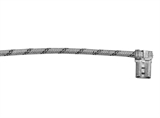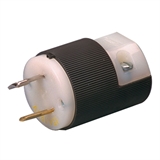
Type E5: Octagon Terminal Box
NEMA 4/7 electrical enclosures provide protection from contaminants, moisture, and hazardous conditions. These housings are screwed onto a heater with a single or double-ended Brass or Stainless Steel fitting.
A threaded fitting mounting termination must be specified. See pages 2-50 and 2-51.
Other terminal box configurations available upon request.
Type MIL: High-Temperature Lead Wire
When required, high-temperature lead wire can be used on most cartridge heaters. The stranded wire is insulated with mica tapes and then a treated fiberglass overbraid. Maximum temperature rating: 450°C (842°F)
Type TL: Teflon® Leads
Maximum temperature rating: 200°C (392°F)
Type HA: Heat Shrink covered Armor Cables
Either the galvanized or stainless steel armor cable can be covered with moisture-proof heat shrink PVC tubing.
Type HTL: Very High-Temperature Lead Wire
When required, high-temperature lead wire can be used on most cartridge heaters. The stranded wire is insulated with mica composite and then a treated fiberglass overbraid.
Available wire gauge sizes: 10-18
Maximum temperature rating: 550°C (1022°F)
Type SR: Silicone Rubber Coated Fiberglass Sleeving
For added protection, strength, and resistance to various chemicals, the lead wires can be covered with silicone rubber sleeving.
SRA Silicone rubber coated fiberglass sleeving on each lead separately
SRB Silicone rubber coated fiberglass sleeving on both leads together
Specify length when ordering.
Maximum temperature rating: 200°C (392°F)
Additional Options
Type TF: Thermal Fuses
Thermal fuses can be built into cartridge heaters to act as a high limit for the heater in applications where the temperature must be limited to avoid dangerous situations. When the trigger point is reached, the thermal fuse will open, cutting the electrical current to the cartridge heater. Once the thermal fuse opens, it cannot be reset. Many different trigger temperatures are available.
Type TS: Thermostat
Cartridge heaters with built-in thermostats are very efficient and economical for heating and controlling temperatures. Available with NPT or special type mounting fittings, they provide a self-contained heater mainly recommended for immersion applications. They can also be used as over-temperature safety devices. The thermostats are factory preset for the trip temperature; therefore, prototyping and testing are required to determine the exactly fixed setpoint. Maximum temperature—302°F (150°C). Maximum Amps—8@120 Volts. A minimum 2-1/2″ cold section is required to house the thermostat.
Type TM: Thermistor
Tempco has the ability to custom design cartridge heaters with built-in temperature sensors such as thermistors and RTDs. For specific applications that have a limited or single setpoint range, thermistors or RTDs in conjunction with simple electronic controllers can be an economical choice.
Type RD: RTD Temperature Sensor
Tempco has the ability to custom design cartridge heaters with built-in temperature sensors such as thermistors and RTDs. For specific applications that have a limited or single setpoint range, thermistors or RTDs in conjunction with simple electronic controllers can be an economical choice.
Standard Electrical Tests and Optional Test Reports
1. Resistance test — measures ohms at room temperature.
2. IR (insulation resistance) test — measures the insulation resistance to the flow of current. Standard test is done at 500VDC.
3. Hipot (high potential) test — a high voltage is applied between a product’s current-carrying conductors and its metallic enclosure to verify that the insulation is sufficient to protect the operator from electrical shock.
4. Leakage current test — measures the current that flows from any conductive part to the ground.
5. Heaters can be serialized and test reports can be sent with each shipment if required.

